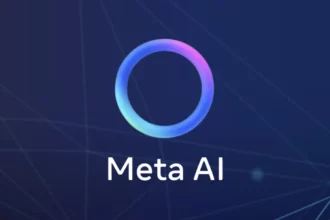Table of Contents
ToggleWhat is Alpaca LLM?

Alpaca is an instruction-following large language model fine-tuned from Meta’s LLaMA 7B model using 52,000 instruction-response pairs generated by OpenAI’s text-davinci-003. It offers comparable behavior to text-davinci-003 while being smaller, lower cost, and accessible for academic research.
Background and Motivation
Instruction-following models like GPT-3.5 and ChatGPT serve millions but face issues including hallucinations, stereotype propagation, and toxic outputs. Their closed-source nature limits academic exploration. Alpaca aims to fill this gap by providing a reproducible, smaller instruction-following LLM for research.
How Alpaca is Built
Base Model
- Meta’s LLaMA 7B serves as Alpaca’s foundation.
- LLaMA models provide strong pretrained language representations suitable for fine-tuning.
Instruction Data Generation
- Starts with 175 human-written instruction-output pairs from the self-instruct seed set.
- Uses text-davinci-003 to expand these into 52,000 unique instruction-response pairs via prompting.
- The generation process cost less than $500 using OpenAI’s API.
- Instructions span diverse topics, e.g., email writing, social media, productivity tasks.
Fine-Tuning Details
- Fine-tuned with supervised learning on the 52K dataset.
- Training completed in approximately 3 hours on 8 NVIDIA A100 GPUs (80GB each).
- Estimated training cost under $100 on standard cloud providers.
- Utilizes Hugging Face’s training framework with Fully Sharded Data Parallelism and mixed precision.
Capabilities and Evaluation
Human evaluations show Alpaca performs comparably to text-davinci-003 on diverse instruction sets. In blind pairwise comparisons, Alpaca scored similarly (90 wins vs. 89 wins). It replicates many instruction-following behaviors of text-davinci-003 but typically generates shorter answers.
However, Alpaca also shares common language model limitations:
- Hallucinates facts, e.g., misidentifying Dar es Salaam as Tanzania’s capital.
- Potentially produces toxic or biased content similar to underlying training model issues.
- Reflects limitations of its instruction tuning data derived from text-davinci-003.
The model remains most appropriate for academic research and experimentation rather than production deployment due to these risks.
Licensing and Usage Restrictions
- Alpaca inherits LLaMA’s non-commercial license.
- Instruction data usage bound by OpenAI’s terms, prohibiting competitive model commercialization.
- No model weights released yet; demo and code are available for non-commercial research.
What Alpaca Offers the Research Community
- Open methodology for instruction-following fine-tuning on a modest budget.
- Release of instruction data, generation code, and fine-tuning scripts supporting reproducibility.
- Interactive demo enabling community feedback and collaborative evaluation.
- Foundation to study instruction-following model deficiencies, safety, and alignment with human values.
Risk Mitigations in Alpaca Demo
- Content filtering based on OpenAI’s moderation API blocks harmful content.
- Watermarking of model outputs to trace generated text with probability-based detection.
- Strict usage terms limit demo to non-commercial and compliant uses following LLaMA licensing.
Future Research Directions
- More rigorous, large-scale evaluations using frameworks like HELM.
- Safety improvements through red teaming, auditing, and adaptive testing.
- Exploring how the pretraining base and instruction dataset properties affect capabilities.
- Development of alternative data generation strategies beyond text-davinci-003 “self-instruct.”
Stanford Alpaca Project Toolkit
The official GitHub repository provides all essential components:
- 52,000 instruction-following data examples.
- Code for generating instruction data automatically.
- Code for fine-tuning LLaMA models using Hugging Face.
- Detailed documentation to aid replication and customization.
This toolkit enables researchers and practitioners to create tailored instruction-following LLMs with modest compute.
Comparisons and Related Models
Alpaca and Vicuna are notable fine-tuned variants of LLaMA showcasing strong performance similar to ChatGPT and GPT-4 on certain benchmarks.
Additional extensions like LLaMAX3-8B-Alpaca exhibit improved language capabilities across more than 100 languages, enhancing multilingual support.
Key Takeaways
- Alpaca is a fine-tuned instruction-following model based on LLaMA 7B and text-davinci-003 data.
- It delivers performance similar to OpenAI models yet is smaller, cheaper, and openly accessible for research.
- Limitations include hallucinations, potential bias, and lack of commercial deployment readiness.
- Stanford releases data, code, and demo with non-commercial licensing to foster community research.
- Ongoing work aims to improve evaluation, safety, and understanding of instruction-tuned LLMs.
Alpaca LLM: The Accessible Instruction-Following Language Model Revolution
What is Alpaca LLM? Simply put, Alpaca is an instruction-following large language model (LLM) fine-tuned from Meta’s LLaMA 7B model, designed to behave closely to OpenAI’s powerful text-davinci-003, but at a fraction of the cost and computational complexity.
If you have been dabbling in natural language AI, you probably know about the heavyweights: GPT-3.5, ChatGPT, Claude, and Bing Chat. These models follow instructions impressively but have notable flaws—like generating falsehoods, reinforcing stereotypes, and mishandling toxic language. On top of that, their closed-source nature makes deep research and tweaking a challenge for academics and hobbyists alike.
Enter Alpaca, a nimble, researcher-friendly LLM that offers a fresh door into instruction-following language model research. It packs surprising punch relative to its size and cost, making the field more inclusive and accelerating exploration. Let’s unravel the story behind Alpaca and what it means for AI enthusiasts, developers, and the broader research community.
From Meta’s Strong Foundation to Stanford’s Magic
The backbone of Alpaca is the LLaMA 7B model, Meta AI’s relatively lightweight yet robust large language model. LLaMA itself is a marvel—compact compared to GPT-3, designed to be practical for researchers with modest hardware. Stanford researchers took LLaMA 7B and fine-tuned it with 52,000 instruction-following examples, generated automatically using the text-davinci-003 API with a clever twist on the self-instruct approach.
To paint a picture: Imagine having just 175 hand-crafted instruction-output pairs to start with. Stanford’s team prompted text-davinci-003 to expand this seed set into a whopping 52,000 unique instruction-response pairs, all generated efficiently to keep costs under $500. This step alone is an effective way to scale high-quality instruction data without drowning in manual labor or spending a fortune.
This fine-tuning took roughly three hours on powerful A100 GPUs, clocking in at less than $100 — a steal for an academic-level project! The resulting Alpaca model mimics many behaviors of text-davinci-003, though sometimes with shorter responses—this brevity matches the style of its training data.
Why Alpaca Matters
- Accessibility: Unlike closed-source titans, Alpaca lets researchers roll up their sleeves and dive into instruction-following model training themselves.
- Cost-effective: Big models usually drain budgets and compute resources. Alpaca shows you can build powerful models affordably.
- Research catalyst: It acts as a baseline for studying common issues like hallucinations, toxicity, and social biases common in LLMs.
Alpaca equips the academic community with a practical tool to explore, identify failures, and develop better safety and alignment techniques without waiting on closed providers.
The Nuts and Bolts of Alpaca’s Training and Data Generation
This isn’t just a happy accident. The team took a systematic data generation pipeline, building on the self-instruct paper, to create instruction-following data at scale and low cost. Their pipeline: use text-davinci-003 as a “data factory,” seeding it with human-written instructions, and then iteratively generating thousands more.
The diversity of instructions is pretty expansive, ranging from writing emails to crafting social media posts and boosting productivity. This wide-ranging dataset helps Alpaca handle real-world queries with reasonable flexibility, whether it’s drafting a business email or brainstorming creative ideas.
Technically, Stanford’s group used advanced techniques like Fully Sharded Data Parallel and mixed precision training—modern tricks to conserve memory and speed up training.
Imagine training a 7B parameter model on 8 state-of-the-art A100 GPUs, finishing in three hours. If that’s not a “weekend project” for academic teams, what is?
Can Alpaca Really Rival OpenAI’s Models?
This is the million-dollar question, figuratively speaking; Alpaca’s training cost is far less.
In human evaluations comparing Alpaca 7B with OpenAI’s text-davinci-003, Alpaca performed nearly neck-and-neck — winning 90 times versus 89 for the latter in blind tests. Interestingly, Alpaca often mimicked text-davinci-003’s behavior closely across diverse user instructions.
But let’s keep it real: Alpaca has some quirks and limitations.
- It sometimes hallucinates. For example, it incorrectly claims Dar es Salaam is Tanzania’s capital, when in fact Dodoma serves as the official capital since 1974. This highlights how subtle errors can slip by in smaller instruction-tuned models.
- Alpaca can reproduce toxicity and stereotypes, issues shared with many language models.
- It might also generate well-written misinformation, so human oversight remains critical.
Yet, these shortcomings aren’t dead ends but active research doors. By studying Alpaca’s flaws, the community can develop mitigation strategies that apply broadly to all LLMs.
Safety and Ethical Considerations
Alpaca is firmly an academic research tool. There is no official commercial release, primarily because it’s based on Meta’s LLaMA model licensed for non-commercial use, and because its training data and methodology draw partially from OpenAI’s text-davinci-003 API, which prohibits competing commercial products.
For safety, the interactive demo filters harmful content, leveraging OpenAI’s content moderation API. Additionally, all Alpaca responses get watermarked using recent detection methods, helping identify outputs from this model.
Despite these safeguards, researchers caution that releasing model weights and code means users can bypass filters, underscoring the importance of responsible deployment and community norms around foundation models.
What Does the Future Hold for Alpaca and Instruction-Following LLMs?
The Alpaca project opens a playground for many fascinating research directions:
- Evaluation expansion: Using frameworks like HELM (Holistic Evaluation of Language Models) to benchmark Alpaca on multi-turn dialogues and more complex instruction-following tasks.
- Safety improvements: Applying sophisticated auditing techniques, automatic red teaming, and adaptive testing to uncover and fix potential harms.
- Understanding training dynamics: What base model qualities and instruction data styles most effectively unlock instruction-following ability? How does scaling affect Alpaca-type models?
In other words, Alpaca is not just a nifty model—that’s the first step. It’s also a research instrument for probing the frontiers of interactive AI and alignment.
Community and Open-Source Culture
Alpaca emerges from a rich ecosystem of open efforts like OpenChatKit, Open Assistant, and Carper AI. The Stanford Alpaca GitHub repository shares everything from the 52K fine-tuning data to code for generating instructions and training the model.
This openness fosters collaboration and lets developers customize Alpaca for niche tasks or languages. Speaking of languages, Alpaca benefits from extensions like LLaMAX3-8B-Alpaca, which improves multilingual translation performance significantly across over 100 languages, including Swahili, Vietnamese, and even Icelandic.
These advances showcase Alpaca’s adaptability beyond English and attest to a future where highly capable language models serve global communities with broader linguistic coverage.
Some Stats: Alpaca in Numbers
| Aspect | Details |
|---|---|
| Model Base | Meta’s LLaMA 7B (7 billion parameters) |
| Fine-Tuning Data | 52,000 instruction-following pairs generated from text-davinci-003 |
| Data Generation Cost | Less than $500 via OpenAI API |
| Training Duration | 3 hours on 8x 80GB A100 GPUs |
| Training Cost | Under $100 on standard cloud compute |
| Approximate Performance | Similar to OpenAI’s text-davinci-003 in blind human evaluations |
| Supported Languages (Via LLaMAX Extension) | Over 100 languages including French, Hindi, Korean, Swahili, and more |
Who Should Care About Alpaca?
If you’re a researcher or developer eager to experiment with instruction-following LLMs without a multi-million-dollar budget, Alpaca beckons. It’s ideal for:
- Academic teams wanting to probe alignment challenges.
- Developers building specialized chatbots or assistive AI for non-commercial uses.
- Language technology enthusiasts interested in multilingual models.
- Anyone curious about how instruction-following capabilities emerge in smaller models.
Alpaca bridges the gap between restricted commercial giants and open experimentation.
Final Thoughts: Alpaca’s Place in the AI Landscape
Alpaca might not dethrone GPT-4 or be your next office assistant just yet, but it changes the game by unlocking research and development to a wider swath of the AI community. Its clever leveraging of self-instruction data generation combined with Meta’s scalable foundation model creates a tool that’s accessible, functional, and ready for experimentation.
By focusing on transparency, affordability, and community involvement, Alpaca encourages collective progress on persistent LLM problems—like hallucination, misinformation, and fairness. And since the code, data, and demo are openly shared, anyone can join the conversation, contribute fixes, or explore new applications.
So the next time you hear “Alpaca LLM,” think beyond an AI model. Think community, research potential, and the democratization of advanced language technology.
References and Resources:
- Stanford Alpaca GitHub Repository
- LLaMAX ACL EMNLP 2024 Paper
- OpenAI API for Instruction Data Generation
- Meta AI LLaMA Model
- Stanford Center for Research on Foundation Models (CRFM)
What is Alpaca LLM and how does it compare to OpenAI’s models?
Alpaca is an instruction-following language model fine-tuned from Meta’s LLaMA 7B. It performs similarly to OpenAI’s text-davinci-003 but is smaller and cheaper to reproduce. Alpaca aims to support academic research rather than commercial use.
How was the Alpaca dataset created and what does it contain?
The dataset has 52,000 instruction-response pairs. It was generated using OpenAI’s text-davinci-003 to expand from 175 human-written seeds. Instructions cover varied topics like email writing, social media, and productivity tasks.
What are the main limitations of Alpaca LLM?
Alpaca can hallucinate facts and produce biased or toxic outputs. It sometimes spreads misinformation, e.g., incorrect capital cities. Its training data and base model inherit common weaknesses seen in language models.
Is Alpaca available for commercial use or deployment?
No. Alpaca’s use is restricted to academic research. Its base model, LLaMA, has a non-commercial license, and the instruction data is bound by OpenAI’s terms forbidding competitive models for commercial purposes.
What safety measures are incorporated in Alpaca’s demo?
The demo includes content filters using OpenAI’s moderation API and watermarks outputs to identify model-generated text. Usage is restricted under strict terms to prevent harmful or commercial use.




